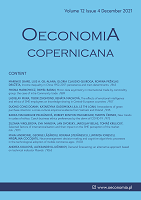Demand forecasting: an alternative approach based on technical indicator Pbands
Demand forecasting: an alternative approach based on technical indicator Pbands
Author(s): Andrea Kolková, Aleksandr KljučnikovSubject(s): Economy, Methodology and research technology, Policy, planning, forecast and speculation
Published by: Instytut Badań Gospodarczych
Keywords: demand forecasting; neural network; BATS; hybrid model; Pbands;
Summary/Abstract: Research background: Demand forecasting helps companies to anticipate purchases and plan the delivery or production. In order to face this complex problem, many statistical methods, artificial intelligence-based methods, and hybrid methods are currently being developed. However, all these methods have similar problematic issues, including the complexity, long computing time, and the need for high computing performance of the IT infrastructure. Purpose of the article: This study aims to verify and evaluate the possibility of using Google Trends data for poetry book demand forecasting and compare the results of the application of the statistical methods, neural networks, and a hybrid model versus the alternative possibility of using technical analysis methods to achieve immediate and accessible forecasting. Specifically, it aims to verify the possibility of immediate demand forecasting based on an alternative approach using Pbands technical indicator for poetry books in the European Quartet countries. Methods: The study performs the demand forecasting based on the technical analysis of the Google Trends data search in case of the keyword poetry in the European Quartet countries by several statistical methods, including the commonly used ETS statistical methods, ARIMA method, ARFIMA method, BATS method based on the combination of the Cox-Box transformation model and ARMA, artificial neural networks, the Theta model, a hybrid model, and an alternative approach of forecasting using Pbands indicator. The study uses MAPE and RMSE approaches to measure the accuracy. Findings & value added: Although most currently available demand prediction models are either slow or complex, the entrepreneurial practice requires fast, simple, and accurate ones. The study results show that the alternative Pbands approach is easily applicable and can predict short-term demand changes. Due to its simplicity, the Pbands method is suitable and convenient to monitor short-term data describing the demand. Demand prediction methods based on technical indicators represent a new approach for demand forecasting. The application of these technical indicators could be a further forecasting models research direction. The future of theoretical research in forecasting should be devoted mainly to simplifying and speeding up. Creating an automated model based on primary data parameters and easily interpretable results is a challenge for further research.
Journal: Oeconomia Copernicana
- Issue Year: 12/2021
- Issue No: 4
- Page Range: 1063-1094
- Page Count: 32
- Language: English

